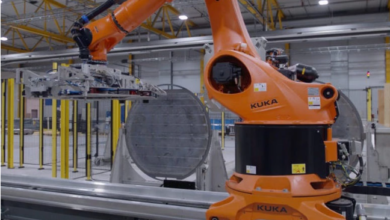Steel industry discusses hydrogen role in carbon neutrality
100% hydrogen-based steelmaking technology is a future that has yet to come, and steelmakers have already started working toward it.

Posco has organised the world first international Hydrogen Iron & Steel Making Forum 2021 (HyIS 2021) in Seoul, South Korea.
The forum discussed the shift towards hydrogen-based steelmaking technologies, which can play a key role in achieving the 2050 Carbon Neutrality goal.
South Korean President Jae-in Moon said that Korea would act first and cooperate with the world to lay the foundation for hydrogen ecosystems, including hydrogen-based steelmaking technology and to overcome the climate crisis.
POSCO Group CEO Jeong-woo Choi emphasised that iron is an eco-friendly material with lower carbon emissions per unit and higher recycling rates than other materials such as aluminium. He highlighted that huge capital investment and time are required to make a breakthrough in hydrogen-based steelmaking technology, requiring cooperation between steelmakers, support from the government and society are important.
Edwin Basson, the World Steel Association director-general, explained the ‘Step-up Programme’, which has been in effect since 2019. It aims to improve raw material quality, energy efficiency, and product yield and process reliability.
Martin Wenguo Pei, CTO of Swedish steelmaker Ssab, introduced Hybrit (Hydrogen Breakthrough Ironmaking Technology) technology developed jointly by Lkab and Vattenfall. Duk-Lak Lee, Head of Technical Research Laboratories, explained HyREX (Hydrogen Reduction Steelmaking) technology which uses Posco’s fluidised furnace technology accumulated through Finex, so it uses the iron powder as it is, while Ssab’s HybritT is based on a direct reduction shaft furnace and uses iron ore processed in the form of pellets. Both Hybrit and HyREX methods use the same principle of hydrogen reduction.
European Steel Association (Eurofer) and the Japan Iron and Steel Federation (Jisf) discussed carbon neutral policies in the steel industry such as a European Green Deal, Fit for 55, and Japan’s declaration of the realisation of a decarbonisation society by 2050.
Steelmakers have been combining several methods to reduce carbon emissions, such as:
- Development of Carbon Capture, Utilisation and Storage (CCUS)
- Development of water electrolysis technology
- Investment in renewable energy
- Carbon recycling by replacing CO2 generated in the blast furnace with methane and reusing it as a reducing agent
- Development of alternative reducing agents such as biomass
- Improving production efficiency through the development of in-house carbon asset management and digitalisation.
